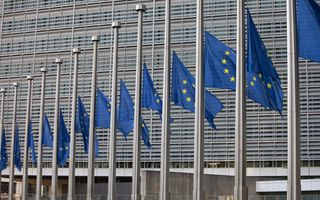(Finance) – Today the European Commission publishes the scoreboard of state aid 2023 relating to spending on state aid in 2022. It provides a comprehensive overview of state aid spending in the EU based on reports provided by Member States. The 2023 edition shows that, despite a strong reduction in state aid spending in 2022 compared to 2021, Member States continued to support businesses affected by the crisis caused by the coronavirus pandemic and Russia’s war against Ukraine.
In 2022, the Member States they declared state aid spending of around 228 billion euros for all objectives, including crisis measures related to the coronavirus pandemic and Russia’s war against Ukraine and all other measures. This corresponds to 1.4% of EU GDP in 2022 and represents a reduction of 34.8% compared to 2021, when spending reached €349.7 billion.
Although they are still at significant levels, the difference between State aid expenditure in Member States has steadily narrowed compared to 2011. State aid spending was between 2.1% and 0.3% of national GDP in 2022, while it was between 4.6% and 0.9% of national GDP. GDP in 2021. The reduction in state aid expenditure for 2022 is mainly driven by the phasing out of measures taken to mitigate the economic effects of the coronavirus pandemic. Member States have adopted measures approved under the Temporary Crisis Framework to counteract the negative effects on the Russian economy of the war against Ukraine.
In 2022 Member States have reduced their spending even for non-crisis objectives. They spent 112 billion (0.7% of EU GDP 2022), equal to approximately 49% of state aid expenditure. Compared to 2021, this corresponds to a reduction of 28% (a reduction of €43.53 billion), net of inflation. It appears that, due to the need to implement measures to mitigate the impact of Russia’s war against Ukraine and remaining spending related to the coronavirus crisis, member states have reduced spending on non-crisis-related objectives.
In addition to crisis aid, environmental aid remains the main objective of Member States’ policies. Environmental protection and energy saving are the policy objective on which Member States spent by far the most in 2022. The share of exempted measures per category continues to increase.
Outside of crisis aid, Environmental aid remains the main political objective of the Member States. Environmental protection and energy saving represent the policy objective on which Member States spent by far the most in 2022 (41.51 billion euros, around 37% of state aid spending on measures not linked to the crisis), even if the value of spending decreased by 46% compared to 2021 in real terms. The second non-crisis political objective is regional development (13.91 billion euros, more than 12% of state aid spending on non-crisis measures), which instead shows an increase of 4.8% in 2022.
The share of block exemption measures continues to increase. In 2022, Member States implemented 1,901 new measures under the General Block Exemption Regulation (“GBER”), 284 under the Agricultural Block Exemption Regulation (‘ABER’) and 18 under the Fisheries Block Exemption Regulation (‘FIBER’) in 2022, corresponding in total to 84 % of the total number of new state aid measures. Excluding crisis measures, new GBER measures represent 93% of the total number of new non-crisis measures. Spending under the GBER measures also decreased in 2022 (a 12% reduction compared to 2021), although by less than the overall reduction in state aid spending across the instruments.
The Commission focuses on potentially more distortive aid measures. In 2022, the median expenditure for notified schemes, which require an evaluation by the Commission, was approximately 4.2 million euroswell above the median value for GBER schemes, which was around €0.8 million.
(Photo: Lukasz Kobus – © European Union)
